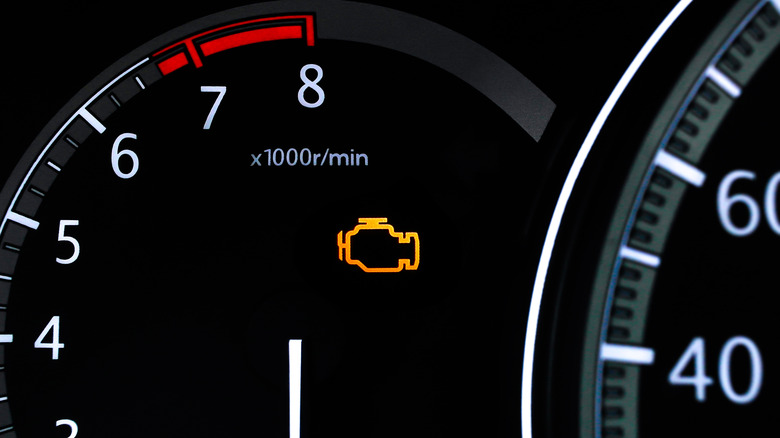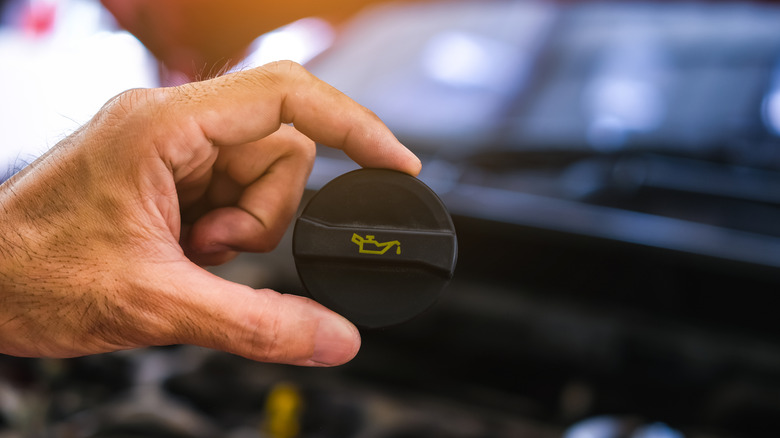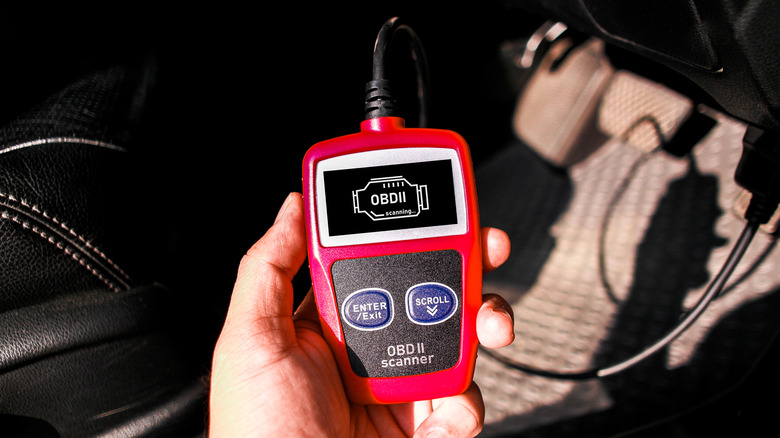Why Your Check Engine Light Might Come On After Getting An Oil Change
For most drivers, an oil change is a quick, hassle-free service that typically puts you out no longer than an hour and costs you (give or take) a hundred bucks. But even if you're perfectly on top of things, getting yourself into the shop — or changing it yourself — every time you're due for one, the unexpected can still happen.
It's enough to strike fear into any driver's heart: The check engine light pops on right after the oil has been changed. Isn't an oil change supposed to prevent these problems, not create them? As it turns out, there are several reasons why this might happen.
One of the most common is also one of the most simple: a loose or missing cap. If the cap isn't tightened enough or if it can't form a proper seal, the engine control module (ECM) will detect a vapor leak or pressure imbalance and trigger the check engine light. It's the same as if the oil dipstick isn't fully inserted back in place after being checked. It allows more air into the engine, and that can lead to inaccurate sensor readings, which may trigger the engine icon on your dashboard.
Other reasons for a check engine light after oil change
The oil filter could also be the cause of the check engine light. Using the wrong size filter or inserting it incorrectly can throw off the oil pressure, create leaks, or trigger the car's sensors to indicate a lubrication issue. Even when the correct filter is used, leaving behind the old gasket can create a bad seal that sets off the sensor.
Using the right type of oil is just as important. Most modern vehicles are designed with very specific viscosity and formulation requirements in mind, and using an incorrect oil can confuse the pressure sensors and cause the check engine light to turn on. The same goes for mixing in contaminated oil that wasn't fully flushed.
The check engine light can also turn on if the oil level is too low after a change. Whether it's from being underfilled or a leak that's gone unnoticed, the engine might not be getting enough lubrication. This can lead to a misfire, and that'd trigger both the check engine light and the oil light. Overfilling oil can be just as harmful. Pour in too much, and the oil can foam up and create too much pressure for the car to handle. Either way, it's enough to give you a warning on the dashboard.
More potential causes of a check engine light
If the oil pressure sensor, vacuum hoses, or other miscellaneous parts near the filter are accidentally bumped, damaged, or left disconnected during or after the oil change, there could be some faulty data being sent to the car's computer. Sometimes, it's something completely unrelated and totally coincidental. Oxygen sensors, ignition coils, spark plugs, and catalytic converters can fail at any time. If they happen to go bad around the same time as an oil change, the warning light might just be bad timing. Drivers aren't out of their minds to assume the oil change caused it, but it very well could have nothing to do with it at all.
In any case, it's best not to panic when the light comes on after an oil change. Instead, start with the simplest troubleshooting steps and work your way through them: Did you read the oil level? Are the cap, dipstick, and filter securely in place? Is the gas cap tightened? If everything seems to be normal but the light is still on, you'll need an OBD-II diagnostic scan at your local repair shop to find out what's really wrong.


